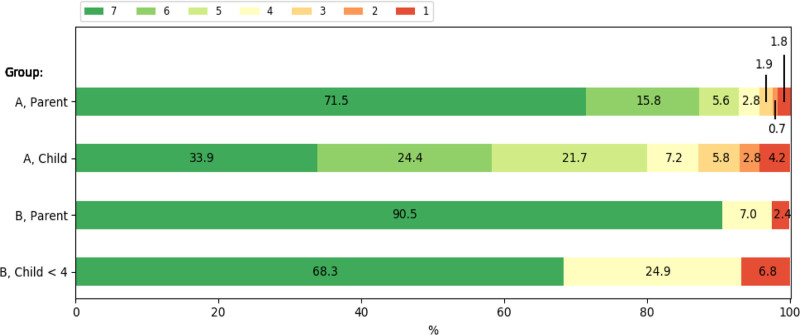To the Editors:
Containment of the devastating coronavirus disease 2019 (COVID-19) pandemic could be completed by means of a comprehensive, global immunization program. The United Nations rightly claims that “No one will be safe until everyone is safe.” This mainly states that equity between all countries, genders, ethnic or religious groups is imperative to prevent the ongoing spread of infection, as well as for ethical and equal justice considerations.1
Currently, high-income countries (HICs) are immunizing at a much faster rate than low-income countries (LICs). This is likely to increase inequity and increase the risk of an ongoing pandemic, possibly with new viral variants. However, unvaccinated adults are not the only possible reservoir for severe acute respiratory syndrome coronavirus 2 (SARS-CoV-2) virus. There are almost 2 billion children younger than 14 years of age in the world (https://www.unfpa.org/data/world-population-dashboard). Children are less likely to be infected by SARS-CoV-2 and infected children generally experience milder clinical symptoms when compared with adults.2 However, SARS-CoV-2 can cause severe illness in children,3 including the multisystem inflammatory syndrome (MIS-C), which can be fatal. Children do carry the virus and have the ability to contribute to the ongoing spread in communities.4 In addition, there are indications that children may suffer from the so called long-COVID.
The United Nations claims that “No one will be safe until everyone is safe,” raising the question of childhood COVID-19 vaccination. It must be argued that if the vaccines are shown to be safe for children, they should have the right of protection against SARS-CoV-2 infection, and it must be recognized that children may become an important reservoir for the virus. We believe that when global adult and risk group COVID-19 vaccination has been achieved, childhood COVID-19 immunization should be initiated.
Iceland is a HIC with a very positive attitude towards childhood vaccinations5 and childhood immunization coverage well above 90%. To evaluate parental views on potential COVID-19 vaccinations in childhood, we performed two surveys in Iceland. In the first survey we received answers from 3373 parents of children younger than 16 years of age where the parents indicated if they would accept COVID-19 immunization for their children. In a separate study, we received answers from 2480 parents of children less than four years of age to the same question (Fig. 1).
FIGURE 1.
Results of questionnaires sent to parents on the attitude towards COVID-19 childhood immunization. Group A: 3373 parents answered an online survey conducted by the University of Iceland. Participation rate 43.2%. Questions: How likely or unlikely is it that you will accept COVID-19 vaccination when offered to you? If COVID-19 vaccination will be offered to your child/children (born 2006 or later), how likely or unlikely is it that you will accept the vaccination for your child/children? Answers: 1: Definitely not; 2: Very unlikely; 3; Rather unlikely; 4: Neither likely nor unlikely; 5: Likely; 6: Very likely; 7: Definitely. Group B: 2480 parents of children less than four years of age answered an online survey conducted by the Children's Hospital Iceland. Participation rate 61%. Questions: When COVID-19 vaccine will be available for you, will you accept it? When COVID-19 vaccine will be available for you, will you accept it for your child? Answers: 1: No; 4: Undecided/don't want to answer; 7: Yes. No parents declined participation in neither study. COVID-19, coronavirus disease 2019.
The conclusion from both surveys was that parents in Iceland have a very positive attitude towards COVID-19 childhood immunization (Fig. 1), even for very young children, despite the lack of severe COVID-19 disease in the Icelandic pediatric population. This is encouraging, especially as the surveys were done in February and March 2021, before a discussion on childhood vaccination was initiated in the media.
Our results provide important information on parental perspectives on COVID-19 immunization that may help policymakers deciding on further public health measures including COVID-19 childhood immunization when adequate, adult global vaccine coverage has been achieved. With the recent FDA approval of at least one vaccine for 12- to 15-year-olds, this becomes even more relevant. Protecting children as well as adults against SARS-CoV-2 may enhance the possibility of keeping “everyone safe.”
ACKNOWLEDGMENTS
We thank Gunnar Steinn Ásgeirsson for assisting with data management.
Footnotes
The authors have no funding or conflicts of interest to disclose.
Availability of Data: All data are available.
Ethical Approval: The research has been given ethical approval.
J.F. contributed to concept, writing literature search, and discussion. F.S. contributed to literature search, and discussion.
REFERENCES
- 1.Haraldsson A. Vaccine implementation reduces inequity. Lancet Glob Health. 20186e1264–e1265. [DOI] [PubMed] [Google Scholar]
- 2.Zimmermann P, Curtis N. Why is COVID-19 less severe in children? A review of the proposed mechanisms underlying the age-related difference in severity of SARS-CoV-2 infections. Arch Dis Child. 2021106429. [DOI] [PubMed] [Google Scholar]
- 3.Williams N, Radia T, Harman K, et al. COVID-19 severe acute respiratory syndrome coronavirus 2 (SARS-CoV-2) infection in children and adolescents: a systematic review of critically unwell children and the association with underlying comorbidities. Eur J Pediatr. 2021180689–697. [DOI] [PMC free article] [PubMed] [Google Scholar]
- 4.Baggio S, L’Huillier AG, Yerly S, et al. Severe acute respiratory syndrome coronavirus 2 (SARS-CoV-2) viral load in the upper respiratory tract of children and adults with early acute coronavirus disease 2019 (COVID-19) Clin Infect Dis 202173:148–150. [DOI] [PMC free article] [PubMed] [Google Scholar]
- 5.Óskarsson Ý, Guðnason Þ, Jónsdóttir GA, et al. Public opinion on childhood immunisations in Iceland. Vaccine. 2015337211–7216. [DOI] [PubMed] [Google Scholar]



